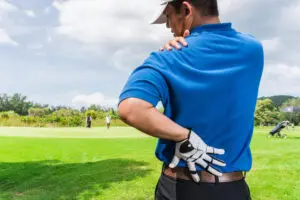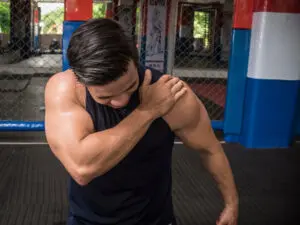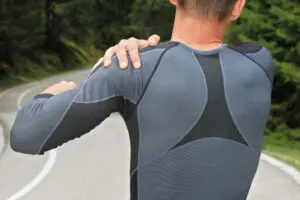Almost every movement you make involves your shoulders. It is a complicated and integral joint in your body, but it can easily damaged through sports injuries and repetitive motion, especially the shoulder labrum. Let’s find out about the diagnosis and treatment of shoulder labrum tears.
What And Where Is The Shoulder Labrum
The labrum is a cup-shaped band of soft cartilage that lines and reinforces the ball-and-socket joint of the shoulder. The shoulder joint is composed of the glenoid, or the shoulder socket, and the head of the upper arm bone known as the humerus or the ball.
The labrum is the attachment site for the shoulder ligaments and supports the ball-and-socket joint as well as the rotator cuff tendons and muscles. It helps provide shoulder stability and allows the ball, or humerus bone, to move freely and painlessly. If it is torn, it can lead to partial or complete shoulder dislocation.
Symptoms Of A Labrum Shoulder Tear
Many tears happen after an acute injury. The most common symptoms of a labrum tear besides pain is a feeling of instability. Since the labrum provides smooth movement within the glenoid socket, any feeling of instability around the arm or shoulder is a prime sign of a tear. Other symptoms include a feeling of grinding or locking when you move your shoulder.
In addition you can expect the following symptoms:
- Loss of arm strength
- Swelling and inflammation
- Pain, especially with overhead motion
- Popping or cracking near the shoulder
- Decreased range of motion
Don’t wait to see Dr. Koo in Kirkland, WA if you suspect you may have a shoulder labrum tear.
A Shoulder Labrum Tear Diagnosis
There are three main types of shoulder labrum tears, but the symptoms of pain and inflammation are similar. A specialist will take tests and do a thorough examination to determine if the tear is a SLAP tear at the front of the arm, a Bankart tear, or a posterior labrum tear.
Treatments
Depending on the severity and position of the tear, treatments will be recommended. Most physicians will begin with conservative treatments.
Physical therapy and medications
Physical therapy will consist of massage, hot and cold therapy, stretching, and exercise. The goal here is to relieve the pain, reduce any swelling, and increase your range of motion.
Over-the-counter medications will be employed along with physical therapy, but if these pain medications are not sufficient, Dr. Koo may prescribe something stronger.
Your input beyond physical therapy will determine which of the following options are utilized.
Steroid Injections
A cortisone shot acts as a local anti-inflammatory for a painful body part.
Surgery
When other medical treatments, including physical therapy, medications, and injections, fail, surgery to repair the shoulder labrum tear may be needed.
Regenerative Therapy
Regenerative therapy involves using your body’s own powerful healing properties to speed healing to injured tissues.
PRP, or platelet rich plasma, uses concentrated plasma injected into the injury site to create healing factors.
Stem Cell therapy is similar using processed stem cells injected into the site of the injury to promote healing.
Talk with Dr. Koo about the pros and cons of each treatment option to discover what is best for you and your lifestyle.
Contact Dr. Koo at (425) 823-4000 if you experience any of the symptoms of a shoulder labrum tear.




